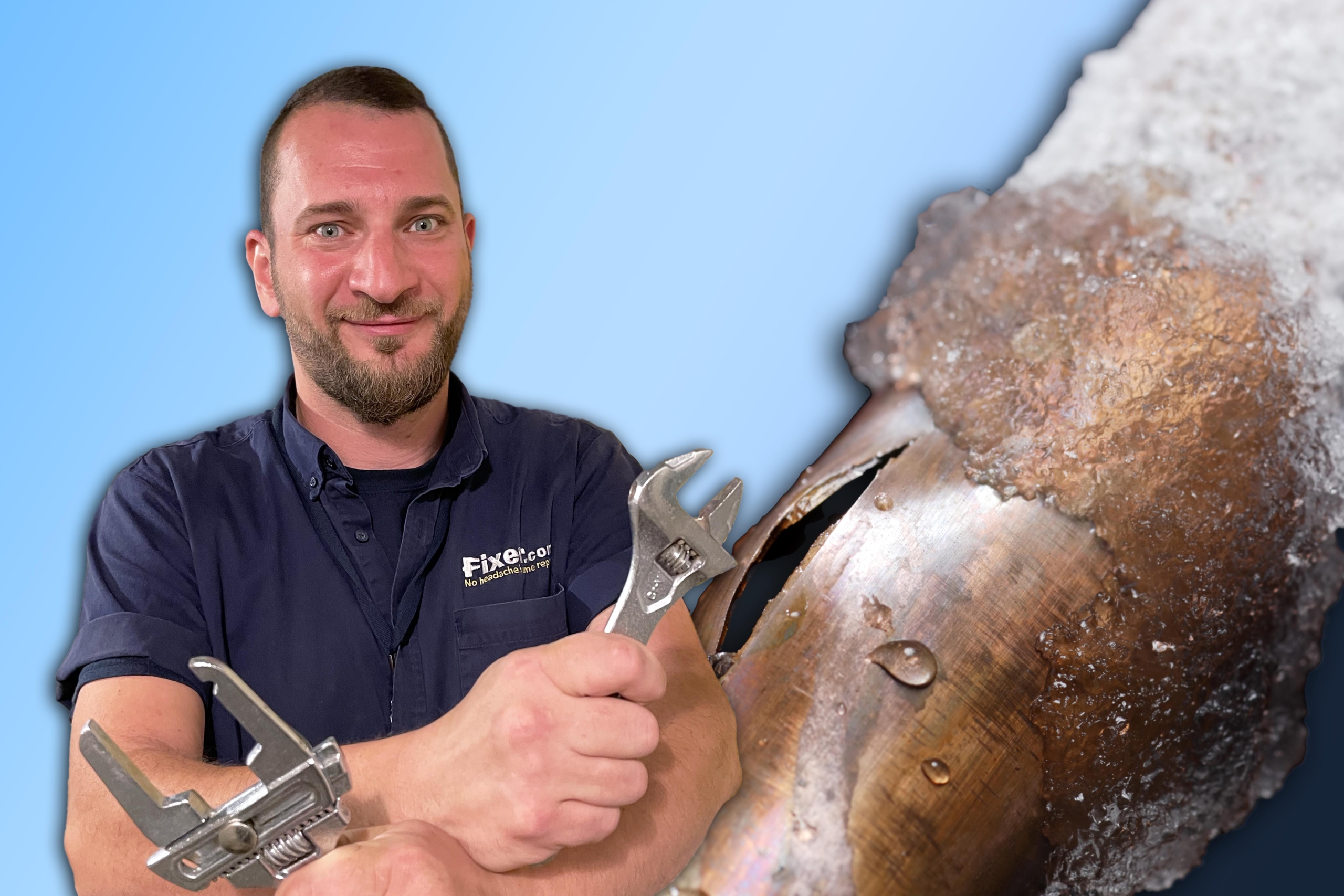Homeowner’s Guide to Frozen Pipes
As the winter chill sets in, homeowners often face the risk of burst pipes due to freezing temperatures. Burst pipes can lead to significant water damage and costly repairs. Here at Fixer, we put together a homeowner’s guide to frozen pipes. In this blog post, we explore the causes of burst pipes, provide prevention tips, and what to do in case of a pipe burst emergency.
Before we dive in, let’s get a better understanding on why pipes burst in the first place. When temperatures drop below freezing, water inside the pipes can freeze and expand, putting immense pressure on the pipe walls. Frozen pipes are more likely to start bursting as they thaw out when temperatures start to climb back up. If the pipes are surrounded by poor insulation, especially in areas like basements, attics, and crawl spaces, this can increase the likelihood of freezing conditions. Additionally, outdoor pipes, such as hose bibs and sprinkler systems, are particularly susceptible to freezing if not properly winterized.

Safeguarding Your Pipes Against Freezing Temps
- Insulate pipes: Ensure that all pipes, especially those in vulnerable areas, are properly insulated. Use pipe insulation sleeves or heat tape for added protection.
- Seal gaps and cracks: By sealing any gaps or cracks in walls, windows, and doors it will help prevent cold air from entering your home and affecting indoor temperatures.
- Drip faucets: Allow a small amount of water to drip from faucets during extremely cold nights to keep water flowing and prevent freezing.
- Open doors: Leave your cabinet doors and interior doors open between rooms. This creates a free flow of heat to circulate through the home and reach the pipes easier.
- Heating your home: Keep your thermostat at a steady temperature day and night. Never let the thermostat fall below 55 degrees Fahrenheit. Once it gets too cold, your heating system might struggle to get back up to warmer temperatures.
- Winterize outdoor spigots: Disconnect and drain water from outdoor hoses to prevent ice blockages in connected pipes. Cover any exposed faucet or spigots outdoors with an insulating dome.

Identifying Signs of Frozen Pipes
- Water pressure: You’ll notice low water pressure or even a trickle of water, when you turn your faucet on. This is a big indicator that your pipe is in trouble.
- Strange Noises: Expanding ice or high-water pressure can cause a pipe to distort and burst, resulting in a loud popping sound. They also may make a gurgling or clanging sound as ice begins to move within them.
- Condensation: If you notice a pipe that’s covered in frost, condensation, or small surface cracks, this can be a warning sign.

Addressing a Burst Pipe Emergency
- Shut off water supply: If you suspect a burst pipe, immediately turn off the closest water valve to put a halt to any more chaos. It might be your main valve, but see if there’s individual valve nearby – that’s the better choice. Going for the extra valve means you can still have water flowing in other parts of your place. Don’t forget, if you use the main valve, the longer it stays off, the more chance it could freeze.
- Open all taps: Open all your water taps to quickly drain the system. When doing this, you can save some of the water in a bucket to use for flushing toilets.
- Address water damage: Take immediate steps to dry the affected areas to prevent mold and structural damage. Eventually you may need to repair drywall and repaint the area affected.

What To Do If You Have a Frozen Pipe
- Keep faucets on: If your pipe is still frozen, keep your faucets turned “on” (even if nothing comes out). This allows for steam and water to exit through the faucet, instead of building up pressure in the pipe. By doing this, you’ll reduce the chances of a pipe bursting as frozen areas start to thaw.
- Apply heat: You can slowly apply heat near the frozen pipe. Hair dryers, heating pads, and space heaters work well.
- Check other faucets: Make sure to check other faucets in your home for more frozen pipes. You can never be too careful – and keep that water dripping!

By understanding the causes of burst pipes and taking proactive measures to prevent them, homeowners can safeguard their properties from winter-related plumbing disasters. We hope you found this homeowner’s guide to frozen pipes helpful. Whether you need to winterize your home, troubleshoot your pipe issues, or repair the related damage, Fixer is here to help. Easily book an appointment at fixer.com. We don’t charge extra for same day availability!

